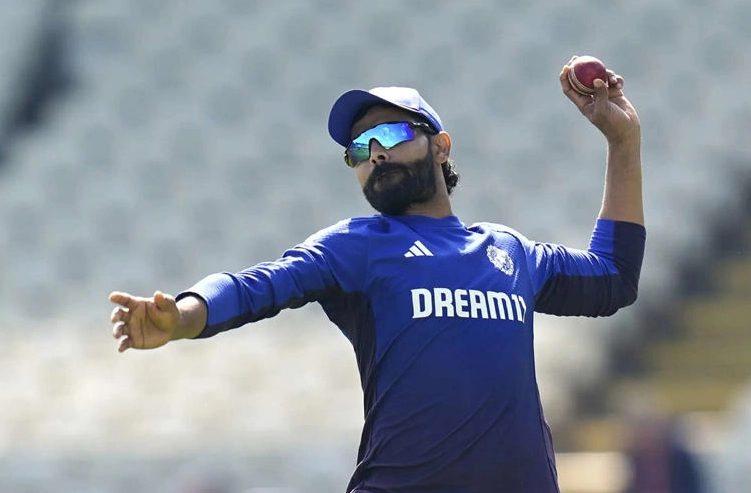
A lull in India’s cricketing calendar allows space and time for various stories to come out.
With the country still delusional over the team’s thrilling six-run victory at The Oval to square the series against England 2-2, media reports emerged that Rohit Sharma and Virat Kohli, two batting stalwarts and players who had already bid adieu to Tests and T20Is, could be playing in their last 50-over series Down Under in Oct.
For fans of the two players, who were expected to bow out only after the 50-over World Cup in October-November 2027 in South Africa, Zimbabwe and Namibia, it came as a shock. The fan clubs of the two players, always at war on social media, were united in grief after reading reports of their probable exit from ODIs as they directed their collective ire at chief selector Ajit Agarkar and coach Gautam Gambhir.
While plenty was discussed about the white-ball futures of both Rohit and Virat and how unfair it was to make the two stalwarts go through the grind of playing Vijay Hazare Trophy and India A games to prove themselves, another cricketer might be skating on thin ice when it comes to his white-ball future.
Ravindra Jadeja, the Saurashtra stalwart, might have had his best series as a batter in the Anderson-Tendulkar Trophy with 516 runs and six half-centuries, but his strike rate in ODIs has been a subject of debate as it has not been at par with the pace at which runs are scored in the format lately. In 204 ODIs, his 2,806 runs have been scored at a strike rate of 85.44.
The fact that he has batted at No.7 or lower, a position where big-hitters walk in and target the boundaries, puts additional scrutiny on those numbers. In fact, in the 11 games that he has batted in at No.6, his average of 30 and strike rate of 81.44 also do not meet modern requirements.
Jadeja’s last outing at that number was his laborious 22-ball 9 in the 2023 World Cup final at Ahmedabad, where he was strangely sent in ahead of Surya Kumar Yadav, curiously to inject some pace in the innings that had got stuck as KL Rahul and Virat Kohli erred on the side of caution while rebuilding the innings after India lost three wickets for 81 runs.
Jadeja has batted at No.7 98 times in 148 matches and has scored 2,000 runs at 83.41. In 2023, that strike rate had dropped to 79.16. With the death overs of modern ODI batting requiring explosive skills, India would be justified in looking at someone with a wider range of strokes and greater power.
In Axar Patel, they probably have an ideal like-for-like replacement. The lanky Gujarat southpaw batted at No.5 in the 2024 T20 World Cup final against South Africa at Barbados, and, despite India stuttering at 34 for 3, belted a momentum-changing 31-ball 47 that allowed Kohli the freedom to drop anchor and bat deep.
Axar was a floater in the batting order during the victorious campaign and had been used tactically, especially as a hitter against spin on the sluggish pitches in the Caribbean. On spin-friendly surfaces in the sub-continent, West Indies and Dubai, he has been used to break the monotony of right-handers following each other.
In the Champions Trophy in the UAE, his 30-ball 27 in the semifinal against Australia and his 29, which included the tactical takedown of Mitchell Santner of New Zealand in the final, made the equation more comfortable for the lower order. Axar’s average of 22.37 may not appear earth-shattering, but the fact that he has scored those runs at 91.47 at crucial times makes him an attractive package in ODIs. In Indian victories, he has scored his runs at 97.97.
Jadeja, who has bowled in 196 innings in the 204 times he has played for India in the blue jersey, has picked up 231 scalps at 35.41 and an economy rate of 4.85. His strike rate of 43.7 is better, though than Axar’s. What goes in favour of Axar is the fact that he often bowls in the powerplay in T2T20Snd in the IPL and wouldn’t be averse to doing it in the ODIs too. The speed at which he bowls and the height at which the balls come down mamakeharging at him difficult for batters.
Both Jadeja and Axar are assets in the field. But India now also has another talented spin-bowling all-rounder in the form of Washington Sundar, who can strike it big in the end overs and is technically adept to bat in the top-6. The fact that he is still only 25, is a safe fielder and an excellent powerplay bowler, makes him an attractive option for captains and coaches to lend balance to the team and field a long batting order.
Both Rohit and Virat probably lost the right to go to England because of a sustained poor run in Tests. In ODIs, though, their numbers have been excellent. It is only their age and the fact that you would be 40 and 39, respectively, when the 2027 ODI World Cup comes around that has made the management wary about picking them beyond Australia. Jad, Eja, too, would be close to 39 when the World Cup is staged in 2027.